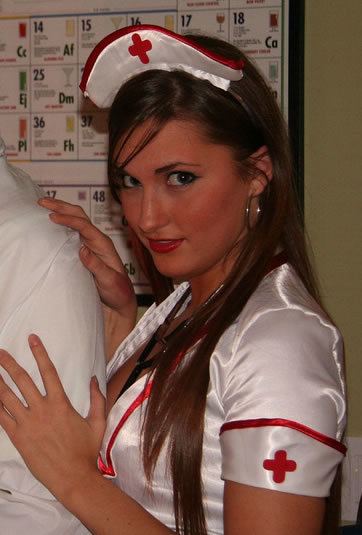 | ||
A stereotype is a generalized idea or image about a particular person or thing that is often oversimplified and offensive. Stereotypes are victim of prejudice when negative portrayals of a group are untrue of individual members. Nursing has been stereotyped throughout the history of the profession. A common misconception is that all nurses are female; this has led to the stereotype of male nurses as effeminate. These generalized ideas of the nursing profession have formed a skewed image of nurses in the media. The image of a nurse projected by the media is typically of a young white single female being over-sexualized as well as diminished intellectually; this idea is then portrayed in get-well cards, television shows and novels. The over-sexualized nurse is commonly referred to as a naughty nurse and is shown as a sex symbol or nymphomaniac. Along with these common stereotypes, studies have identified several other popular images used in media such as handmaiden, angel, torturer, homosexual male, alcoholic, buffoon and woman in white. Common stereotypes of nursing and portrayal of these misconceptions have fueled a discussion on the effects they have on the profession, harmful or good.
Contents
Angel as a model nurse
The image of a nurse as a ministering angel was promoted in the 19th century as a counter to the then image of a nurse as a dissolute drunk, exemplified by Dickens' Sarah Gamp. The model nurse in this image was moral, noble and religious, like a devout nun—chaste and abstemious—rather than an unpleasant witch. Her skills would be practical and her demeanour would be stoic and obedient. Florence Nightingale promoted this image because, at the time, the idea of having female nurses attending the British army fighting the Crimean war was controversial, being thought immoral and revolutionary.
Harmful effects
The media has a strong influence on public views, shaping the way the public values and treats professions in healthcare. In the book, "Saving Lives: Why the Media's Portrayal Nurses Puts Us All At Risk" the authors Sandy Summers and Harry Jacobs discuss the many ill effects of the common stereotypes and how those are presented in today's media. The authors argue that offensive stereotypes such as handmaidens as well as sexual stereotypes leads media to overlook how important nurses are in healthcare, which generates a lack of respect. This disrespect and ignorance puts lives at risk because it hinders the job of the nurse, which in most cases is to save lives. The media projections of nurses can not only damage the respect from patient to nurse, or colleague to nurse, but can also impact the pride of the individual nurse. This could potentially lead a nurse to believe that they truly are working for a physician rather than with them, it could also discourage a nurse from standing their ground or demanding respect.
